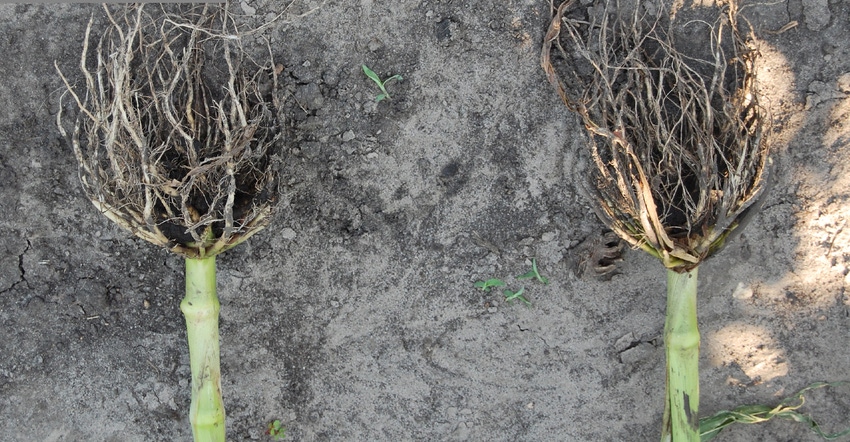November 15, 2018

By Mark Glady
Insect pressure for Minnesota farmers was mild to moderate in 2018.

Mark Glady

And though I didn’t see anything devastating in my territory of west-central Minnesota, there were appearances by established species as well as unwelcome newcomers.
Here is a brief summary of pests seen in 2018 and some ways to get a jump on managing them in the coming season.
Observation 1: Rain helped curb corn rootworm feeding. There was minimal corn rootworm (CRW) feeding in my area in 2018. There is always a degree of feeding, but the 15 to 20 inches of rain that some areas received during the month of June, when rootworms are hatching, drowned most of them out.
Corn blotch leaf miner was quite widespread. However, there was not enough damage to plants to cause an economic yield loss. Corn blotch leaf miner is a fly that lays an egg underneath the cuticle of the corn leaf. The egg hatches into a worm that chews and tunnels, making a lesion on the leaf that resembles gray leaf spot.
Observation 2: Soybean fields hosted insects old and new. Soybean aphids are by far the dominant insect farmers face in this crop, and 2018 was an average year for them. Most fields where they were present hit the 250-aphids-per-plant mark, which is the industry-established economic threshold. Many soybean farmers had to spray most of their acres for soybean aphids, which overwinter on buckthorn and are very resilient — even in extreme temperatures.
Something I saw more of this year than previously, mainly in soybean fields, was the stinkbug.
Historically, this has been more of an Iowa-Illinois-Indiana-Ohio pest. However, it appears to increasingly be making its way into Minnesota and surviving our winters. Stinkbugs are nowhere near economic thresholds, but if I looked hard enough in some fields, I could usually find one or two.
Another insect to keep an eye out for is soybean gall midge. University of Minnesota Extension entomologists received samples from a field in Rock County in far southwestern Minnesota, where stems were infested with these small orange worms. This is another example of an insect that’s moving to our state from Iowa and South Dakota.
Some tips to manage pests next year
Tip 1: Take steps to manage corn rootworm. The trend to conserve costs by not planting CRW-traited corn might have worked to your advantage this year, but you can’t count on another year with heavy June rains in 2019. Either plant CRW-traited seed or use soil-applied insecticides at planting to help avoid a lodging disaster and yield loss in your cornfields.
Also remember that with depressed soybean prices due to Chinese tariffs, there may be additional corn-on-corn acres planted in 2019. These would be good areas for a soil-applied insecticide at planting.
Tip 2: Treat your soybeans, scout your fields. Consider having your soybean seed treated with an insecticide, as that can help slow down aphid progression. It probably won’t save you from spraying, but it will give you more time to get the field scouted. Plus, populations don’t tend to increase as quickly when you have a seed treatment insecticide helping control them. Scout your fields in-season — or have your agronomist do so — to monitor aphid activity and determine if the economic threshold has been reached.
It’s beneficial to get a jump on insects now. Work with your agronomist to create a comprehensive plan to manage them in 2019.
Glady is a regional agronomist with WinField United in west-central Minnesota. Contact him at [email protected].
You May Also Like




